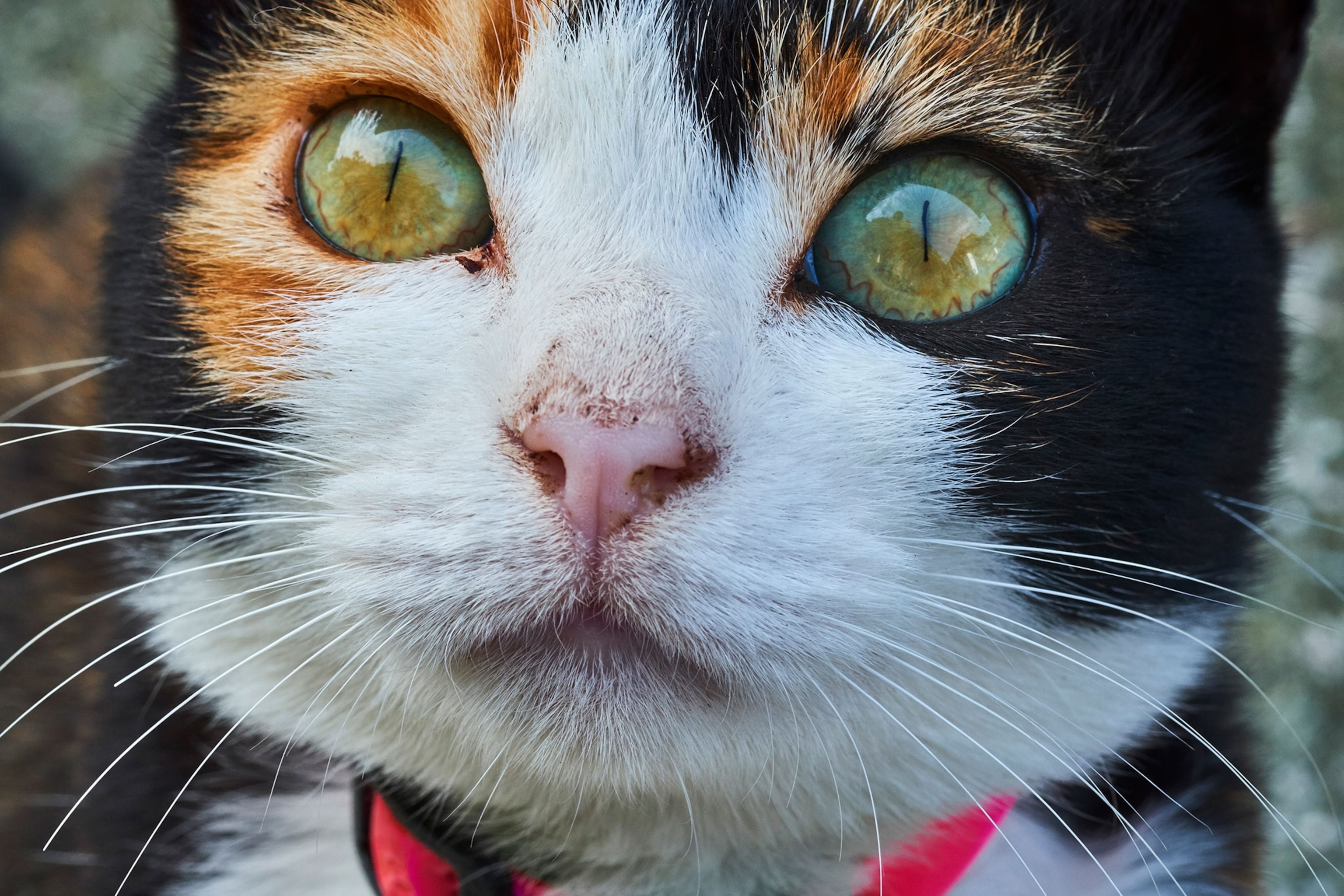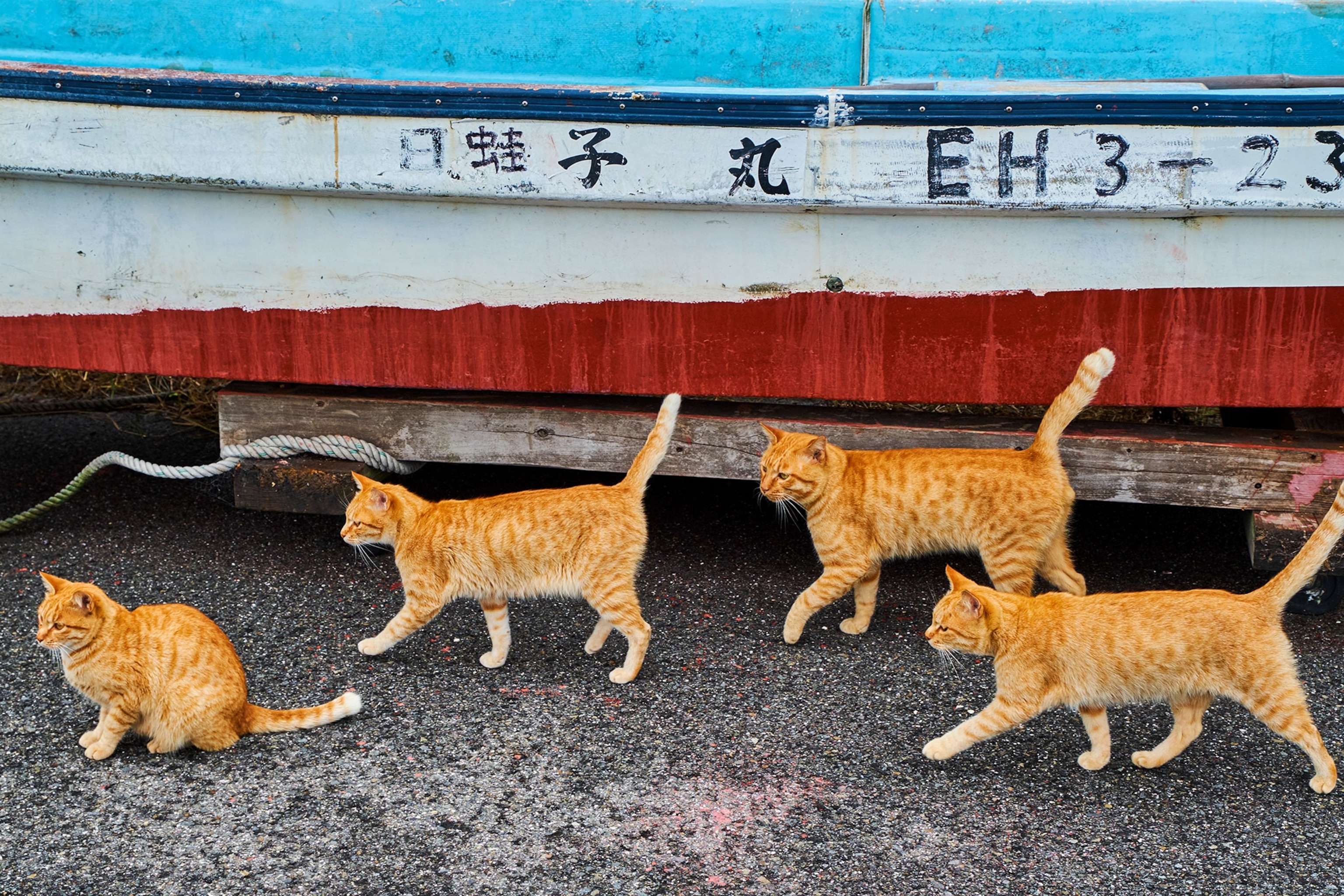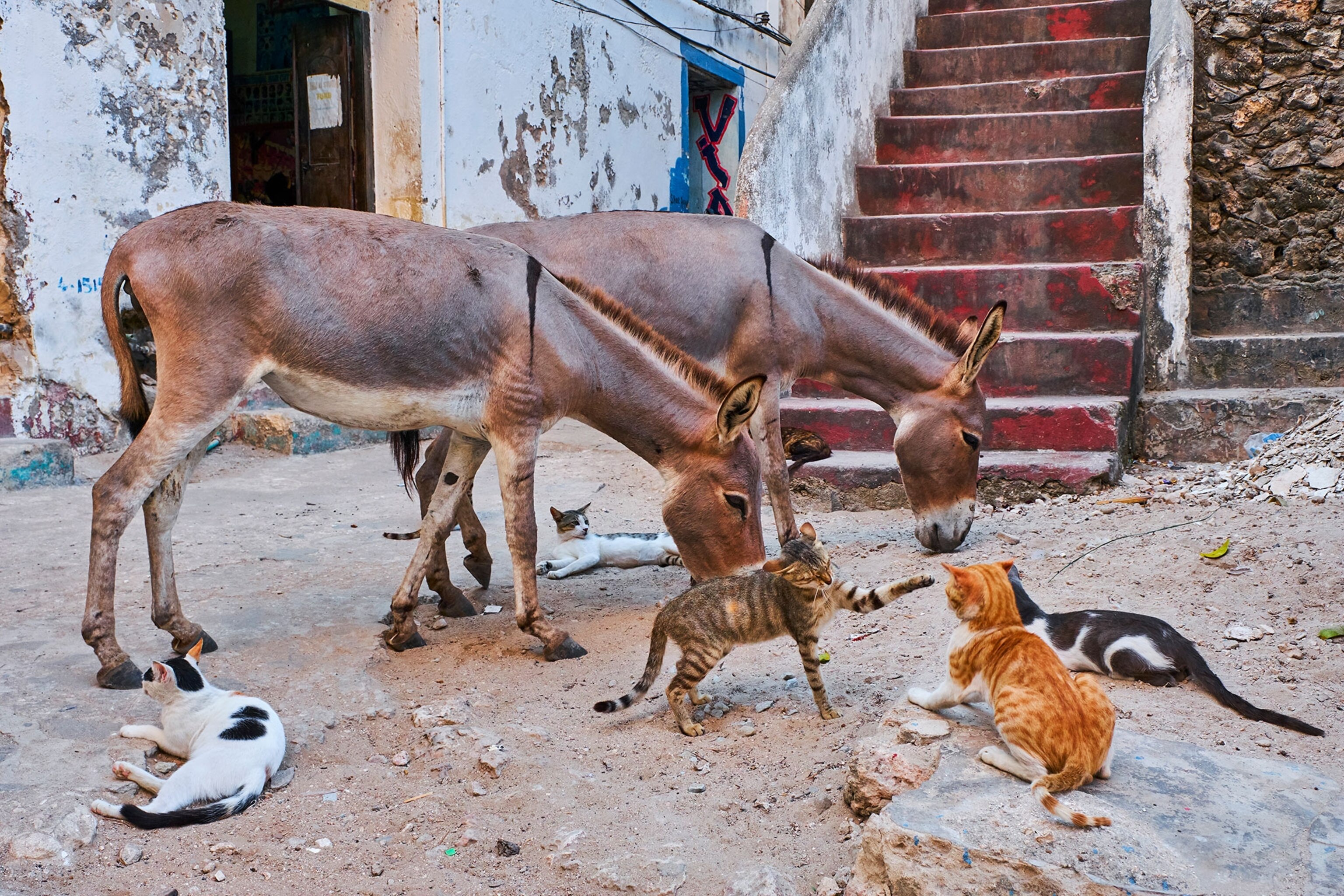For 18 years, Tuul and Bruno Morandi photographed the people, cities, and landscapes of the world. As they traveled, they accidentally started to accumulate extra photos of another, nonhuman subject: the furry, friendly faces of street cats.
In Tuul and Bruno’s book, La Grand Odysée des Chats (“The Grand Odyssey of Cats”), feline subjects relax against the bright blue buildings of Chefchaouen in Morocco, jump across ruins in Greece, and watch fishermen curiously in Japan, awaiting their opportunity to steal away with discarded fish scraps.













The Morandis themselves are cat lovers. They actually dedicated the book to their own cat of 10 years, Mujra, who Tuul describes as “beautiful and kind.”
The pair were drawn to the charismatic felines while on work trips and couldn’t help but take pictures of the cats they met in the field. Once they had enough pictures, they asked their editor if they could put together a book. The editor agreed, and they began documenting the semi-wild creatures with a renewed focus.
The photographers compare taking pictures of cats to taking pictures of humans. “For us, it’s almost the same,” Tuul Morandi says. “Because we are the kind of photographers who like to make pictures of the instant, of life every day in the street.” Before they engage with their subjects directly, the Morandis try to get the most authentic, candid moments of people and animals acting naturally. Afterwards, they’ll talk to the humans and, if the cats will let them, the photographers will pet and engage with them too.
Across different cities, cats tend to have the same habits, the Morandis noticed, but, like humans, some cats are more shy than others. While “feral” cats are typically distinguished by their fear and distaste for humans, un-owned “street,” “stray,” or “community” cats are sometimes friendly. “Sometimes some cats are really shy, but in Japan most of the cats we met were not shy at all,” Tuul says. “They know that the humans are kind. Maybe it’s the relationships they have with the people who feed them.” (Read how cats domesticated themselves.)


In Japan, people are especially kind to cats, who even have a “special relationship” with fishermen, Tuul says. The animals are thought to bring good luck, and there are temples where people can worship them. Cats are also something of a tourist attraction—the country is home to nearly a dozen “cat islands.”
Culture, religion, history, and legends are integral to the public perception of street cats. The prophet Muhammad was said to have given sermons with his beloved cat Muezza on his lap, and when he found the animal asleep on his robe, he cut the sleeve off of it rather than disturb Muezza. “In most of the Islamic countries like Morocco and [Turkey], they have a special relationship with cats,” Tuul explains, “because the Prophet loved, loved cats.” (In Washington D.C., stray cats battle rat populations.)
Not everyone loves stray cats, though. In most places, feral cats are considered invasive predators, and they can wreak havoc on local wildlife, to the concern of conservationists. It’s well-accepted that cats outside of houses kill lots of wildlife, and in 2013, a meta-analysis study published in the journal Nature Communications tried to quantify that death. The study suggested that free-roaming domestic cats kill 1.3 to 4 billion birds and 6.3 to 22.3 billion mammals a year in the U.S.
The study, however, was controversial, and the results were criticized by some as “shaky.” That’s because there are no formal records of how many outdoor cats live in the U.S., and studies of cat behavior tend to be done where there there is an unusually high density of felines, so getting an accurate estimate is nearly impossible. In turn, researchers called this doubt “science denialism” by cat advocates in another paper.
In order to keep stray cat populations under control, some organizations use Trap, Neuter, Return, or TNR, programs. Volunteers spay and neuter stray animals that can’t be placed in permanent homes as pets, so the cats can live out their lives on the street peacefully, without making any more kittens. In theory, enough TNR would lead to a slow, peaceful extinction of unowned cats, or at least stability in their numbers. However, studies have found cats reproduce so quickly that TNR is only effective if 75 percent or more cats in an area are sterilized each year. (Watch spy cameras track how far outdoor cats roam from home.)
In spite of the controversy surrounding the overall environmental impact of cats, people around the world enjoy their company. In Lamu, an island off the coast of Kenya, street cats are part of their cultural history. In Greece, the animals are legally protected. Where people appear in the Morandis photographs, they either casually ignore the creatures or actively pet and hold them.
“The cats [are] part of their life in the street,” she says.
Related Topics
You May Also Like
Go Further
Animals
- This ‘saber-toothed’ salmon wasn’t quite what we thoughtThis ‘saber-toothed’ salmon wasn’t quite what we thought
- Why this rhino-zebra friendship makes perfect senseWhy this rhino-zebra friendship makes perfect sense
- When did bioluminescence evolve? It’s older than we thought.When did bioluminescence evolve? It’s older than we thought.
- Soy, skim … spider. Are any of these technically milk?Soy, skim … spider. Are any of these technically milk?
- This pristine piece of the Amazon shows nature’s resilienceThis pristine piece of the Amazon shows nature’s resilience
Environment
- This pristine piece of the Amazon shows nature’s resilienceThis pristine piece of the Amazon shows nature’s resilience
- Listen to 30 years of climate change transformed into haunting musicListen to 30 years of climate change transformed into haunting music
- This ancient society tried to stop El Niño—with child sacrificeThis ancient society tried to stop El Niño—with child sacrifice
- U.S. plans to clean its drinking water. What does that mean?U.S. plans to clean its drinking water. What does that mean?
History & Culture
- Séances at the White House? Why these first ladies turned to the occultSéances at the White House? Why these first ladies turned to the occult
- Gambling is everywhere now. When is that a problem?Gambling is everywhere now. When is that a problem?
- Beauty is pain—at least it was in 17th-century SpainBeauty is pain—at least it was in 17th-century Spain
- The real spies who inspired ‘The Ministry of Ungentlemanly Warfare’The real spies who inspired ‘The Ministry of Ungentlemanly Warfare’
- Heard of Zoroastrianism? The religion still has fervent followersHeard of Zoroastrianism? The religion still has fervent followers
Science
- Here's how astronomers found one of the rarest phenomenons in spaceHere's how astronomers found one of the rarest phenomenons in space
- Not an extrovert or introvert? There’s a word for that.Not an extrovert or introvert? There’s a word for that.
- NASA has a plan to clean up space junk—but is going green enough?NASA has a plan to clean up space junk—but is going green enough?
- Soy, skim … spider. Are any of these technically milk?Soy, skim … spider. Are any of these technically milk?
- Can aspirin help protect against colorectal cancers?Can aspirin help protect against colorectal cancers?
Travel
- What it's like to hike the Camino del Mayab in MexicoWhat it's like to hike the Camino del Mayab in Mexico
- Is this small English town Yorkshire's culinary capital?Is this small English town Yorkshire's culinary capital?
- This chef is taking Indian cuisine in a bold new directionThis chef is taking Indian cuisine in a bold new direction
- Follow in the footsteps of Robin Hood in Sherwood ForestFollow in the footsteps of Robin Hood in Sherwood Forest








